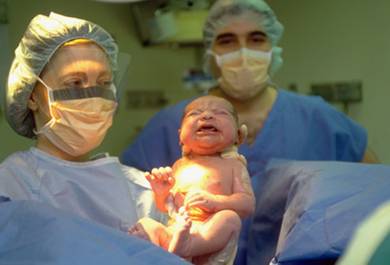Clinic Location
Care n Cure Clinic, Nayapalli, Near Hotel Crown, Bhubaneswar
For Consultation
+91 7008110200
+91 9090910009
Work Hours
Mon - Fri : 05:30 - 07:30
Menu
Close
- Home
- About Doctor
- Services
Postnatal care
Gynaecological services
- General Consultatnt
- Adolescent Clinic
- Well Women Clicnic
- Gynaecological Surgeries
- Gallery
- Your Pregnancy
- Training
- Contact
- Feedback
- Blog
- Home
- About Doctor
- Services
Postnatal care
Gynaecological services
- General Consultatnt
- Adolescent Clinic
- Well Women Clicnic
- Gynaecological Surgeries
- Gallery
- Your Pregnancy
- Training
- Contact
- Feedback
- Blog
- Home
- About Doctor
- Services
Postnatal care
Gynaecological services
- General Consultatnt
- Adolescent Clinic
- Well Women Clicnic
- Gynaecological Surgeries
- Gallery
- Your Pregnancy
- Training
- Contact
- Feedback
- Blog
Month Wise Changes in Pregnancy
Home / Month Wise Changes in Pregnancy
First Month (4 weeks)
So you’ve had your baby and now it’s time to do crunches, lots and lots of crunches, to get your abs back in shape again. Right? Well, actually no. Fitness and exercise after pregnancy is a lot more complicated than that. In fact, exercises like crunches may actually do more harm than good in the initial postpartum period.
The abdominal wall is comprised of four main pairs of muscle tissue, each with right and left sides, which cover and support the abdominal cavity.
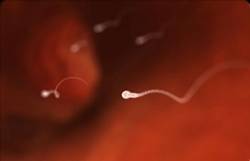
1. conception the laborious journey of the sperm

2. conception fertilization the sperm penetrates the egg
Book Appointment Today
Services Provided
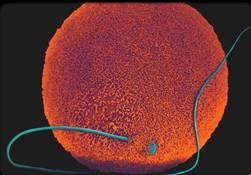
3. conception human sperm fertilizing ovum
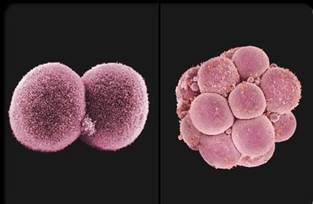
4. conception the cells begin to divide

5. conception implantation
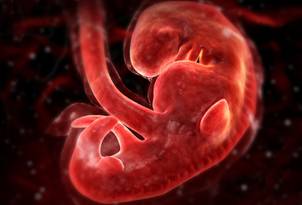
Photo: Fetal Development at 4 Weeks
Services Provided
- Pregnancy Care
- Postnatal care
- High RiskObstetrics
- Painless Delivery
- Infertility Management
- Gynaecological services
- Advanced Laproscopics Genaecological & Hysteroscopic Surgeries
- Painless Delivery & Birthing Suites
Baby:
At this point of development the structures that eventually form the face and neck are becoming evident. The heart and blood vessels continue to develop. And the lungs, stomach, and liver start to develop. A home pregnancy test is now positive.
>By the end of the first month, your unborn baby is technically known as an embryo. He has a heart, and a heart beat can already be detected. Finger-shaped growths called chorionic villi grow into the uterine wall to anchor the embryo, and the umbilical cord is beginning to form. Your baby is about the size of a pea!
The first weeks are the most vulnerable for an unborn baby, so it’s a good time to assess your lifestyle. Stop smoking and cut down on alcohol, check your work environment for hazardous conditions, and take care when handling pets to avoid contracting toxoplasmosis.
Second Month(8 Weeks)
Fetal Development at 8 Weeks: Conception to Birth
At this point of development the structures that eventually form the face and neck are becoming evident. The heart and blood vessels continue to develop. And the lungs, stomach, and liver start to develop. A home pregnancy test is now positive.
>By the end of the first month, your unborn baby is technically known as an embryo. He has a heart, and a heart beat can already be detected. Finger-shaped growths called chorionic villi grow into the uterine wall to anchor the embryo, and the umbilical cord is beginning to form. Your baby is about the size of a pea!
The first weeks are the most vulnerable for an unborn baby, so it’s a good time to assess your lifestyle. Stop smoking and cut down on alcohol, check your work environment for hazardous conditions, and take care when handling pets to avoid contracting toxoplasmosis.
You’re pregnant. Congratulations! Are you curious how big your developing baby is, what your baby looks like as it grows inside you, and when you’ll feel it move? Take a peek inside thewomb to see how a fetus develops from month to month. The baby is now a little over half an inch in size. Eyelids and ears are forming, and the tip of the nose is visible. The arms and legs are well formed. The fingers and toes grow longer and more distinct.
» » Mother:
By the end of the second month, you may begin to feel pregnant. Your breasts may be tender, and you might be experiencing morning sickness or nausea during the day. Don’t be surprised if you undergo some raging mood swings as well. Fatigue is also an issue throughout the first trimester. You may be just a bit more tired than usual, or you may be so exhausted that four-hour naps every afternoon are the rule. Those constant trips to the loo continue, no doubt Nature’s way of training you to wake up several times during the night in preparation for your baby’s feeding schedule!
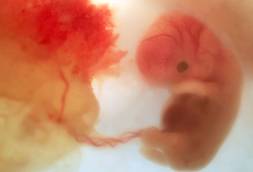
Photo of 8 week fetus
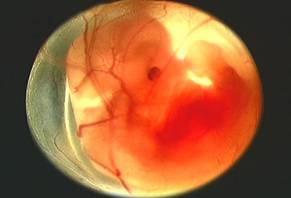
Photo of 8 week fetus circle
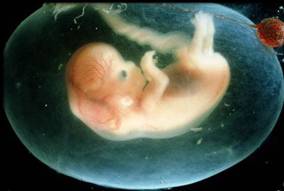
conception: 8 week human fetus in utero
» » Baby :
Your unborn baby has now graduated to being called a foetus. His internal organs are already in place and ready for further development. If you have an ultrasound scan, you may see your baby wiggling and waving like mad, but you won’t feel anything yet. An eight-week-old foetus already has distinct facial features.
Third Month (12 Weeks)
» » Mother:
By the end of the third month, you should be beginning to perk up a bit if you’ve experienced fatigue. Morning sickness and frequent urination should both begin to subside. At around twelve weeks, you should have your first visit to the antenatal clinic. Remember, you are entitled to paid leave for antenatal checkups and classes. A number of tests and scans are done between 11 and 13 weeks. Your first ultrasound may be done at this time to determine the baby’s age. Other tests which screen for possible birth defects can include a nuchal translucency scan or a chorionic villus sampling.
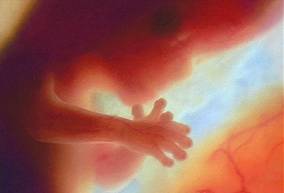
Photo of 8 week fetus
» » Baby :
By twelve weeks, your developing baby is about 3 inches long and still weighs less than an ounce. His eyes are completely formed and his fingers and toes are becoming distinct. His genital organs can be seen quite clearly with an ultrasound an his internal organs are functioning.
Fourth Month (16 Weeks)
Fourth Month (16 Weeks)
The fetus now measures about 4.3 to 4.6 inches and weighs about 3.5 ounces. The top of your uterus should be felt about 3 inches below your belly button. The baby’s eyes can blink and the heart and blood vessels are fully formed. The baby’s fingers and toes should have fingerprints.
You will probably be noticeably pregnant now, as your waistline disappears and your muscles and ligaments begin to relax. Your appetite may increase as you begin to feel better, and rapid weight gain may follow. Eat carefully to ensure optimal nutrition for you and your growing baby. You may want to switch to looser clothing, but be sure your maternity bra is properly fitted and provides adequate support. At this stage of the pregnancy, you may notice changes in skin pigmentation on your face, breasts and arms, and your nipples and areola may darken.
Tests and Scans: At about 16 weeks, you may undergo a blood test to check the level of alpha-fetoprotein in your blood (called an AFP Screening), an indicator of Down’s syndrome or spina bifida. The Triple Test, also known as the Bart’s triple test, is similar to the AFP screening but measures other hormones in your blood, such as oestriol and human chorionic gonadotrophin. If you are over 35 or there is a history of chromosomal abnormalities in your family, you may be offered an amniocentesis test at about 16 weeks.
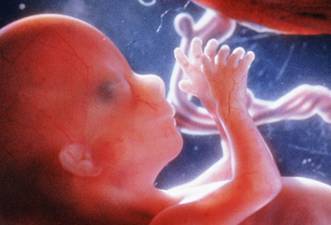
Photo of 8 week fetus
» » Baby :
Your baby is about 6 inches long and is fully formed. He can hear your voice now. He is covered with fine hair called lanugo, and his skin is transparent. His tiny fingernails are now visible.
Fifth Month (20 Weeks)
The baby weighs about 10 ounces and is a little over 6 inches long. Your uterus should be at the level of your belly button. The baby can suck a thumb, yawn, stretch, and make faces. Soon, if you haven’t already you’ll feel your baby move, which is called “quickening.”
An ultrasound is generally performed for all pregnant women at 20 weeks of gestation. During this ultrasound, the doctor will confirm that the placenta is healthy and attached normally and that your baby is growing properly in the uterus. The baby’s heartbeat and movement of its body, arms, and legs can also be seen on the ultrasound. The gender of the baby can usually be determined at 20 weeks.
» » Baby :
You are getting bigger every day, and during the fifth month you should start to feel your baby’s movements, which begin as light, fluttery sensations. Your skin might darken and stretchmarks may appear on your abdomen or breasts. Your breasts may begin to produce colostrum. Your gums might bleed and you may have a congested nose. Vaginal discharge may increase during this time as well.
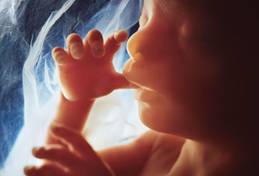

Time for an Ultrasound: photo of the ultrasound 20 weeks
» » Baby :
As your baby’s muscles become stronger, he will move about more energetically, particularly when you are trying to get some sleep! His teeth are already beginning to form within his jawbone. He is about 10 inches long and weighs roughly 12 oz. He may have some hair on his head and he can clench his fists. Eyebrows and eyelashes are growing.
Sixth Month (24 Weeks)
The fetus weighs about 1.4 pounds now. It responds to sounds by moving or increasing its pulse. You may notice jerking motions if it hiccups. With the inner ear fully developed, it may beable to sense being upside down in the womb.
» » Mother:
You are now visibly pregnant. You will gain weight around this time, and you may feel overheated and sweaty as your blood supply increases. Your face may look flushed as well. Your heart and lungs are working 50% harder than normal. You may have some pain in your ribcage as the baby begins to press upwards. Shortness of breath may follow for the same reason. As your pregnancy progresses, it is important to maintain correct posture and protect your feet and joints. Wear comfortable shoes and clothing, rest with your feet up, and continue your antenatal exercises.
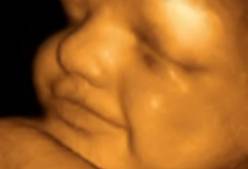
» » Baby :
At 24 weeks, your baby can suck his thumb and hiccup. He will have patterns of sleep and activity which you will come to know. His skin has lost its translucent appearance, but he still has not laid down any stores of fat and is therefore quite thin.
Seventh Month (28 Weeks)
The fetus weighs about 2 pounds 6 ounces. It changes position frequently at this point in pregnancy. There’s a good chance of survival if your baby is born prematurely now. Ask your doctor about preterm labor warning signs. Register for birthing classes. Birthing classes prepare you for many aspects of childbirth, including labor and delivery and parenting the newborn.
» » Mother:
As your stomach expands, you may notice stretchmarks on your stomach or thighs. Indigestion can be a problem as your growing baby presses on your stomach. Some women have lower back pain or sciatic pain as the abdomen grows larger and the pelvic joints loosen in preparation for delivery. Leg cramps may pose a problem; adequate calcium in your diet can help. You may feel painless contractions, called Braxton Hicks contractions. These contractions are a way for your uterus to “practice” and do not signify the onset of labour. Your antenatal checks will increase in frequency, perhaps to every 2-3 weeks. You should have received a maternity certificate (Form MAT B1) from your doctor or midwife which allows you to apply for statutory maternity pay or a weekly maternity allowance. Remember to give your employer notice of when you plan to stop work and when you plan to return.

» » Baby :
Your baby now weighs about 2 pounds and is 14-15 inches long. His eyes are open and he can see. He is coated with a waxy substance called vernix caseosa which protects his skin, and he is building up a layer of fat which will help him to maintain his body temperature once he is born.
Eighth Month (32 Weeks)
» » Mother:
Often moving, the fetus weighs almost 4 pounds. The baby’s skin has fewer wrinkles as a layer of fat starts to form under the skin. It will gain up to half its birth weight between now anddelivery. Ask your doctor how to do a fetal movement chart. Think about breastfeeding. Soon you may start leaking colostrum from your breasts, a yellowish fluid that precedes milkproduction.
By now you are starting to feel a bit ungainly as your centre of gravity shifts andphoto_of_pregnancy your stomach continues to grow larger. Try to stand up straight and practice good posture at all times. Your ribs may begin to feel sore as the baby pushes up against them, and those constant trips to the loo return as baby presses on your already-cramped bladder. Your naval will disappear, and you may have a dark line, called the linea nigra, running down your abdomen. You may have difficulty sleeping, both because of your size and because of the activity of your baby. Rest as much as you can! You may begin antenatal classes, and now is a good time to shop for baby.

» » Baby :
Your baby is about 16 inches long and weighs around 3.5 pounds. His face is now smooth, and he will be laying on fat stores over the next weeks in preparation for life outside the womb. Most babies will have turned head down by this time in preparation for birth. If your baby were to be born now, he would have an 80 per cent chance of survival.
Ninth Month (36 weeks to 40 weeks progress)
» » Mother:
Babies differ in size, depending on many factors (such as gender, the number of babies being carried, and size of the parents), so your baby’s overall rate of growth is as important as theactual size. On average, it’s about 18.5 inches and weighs close to 6 pounds. The brain has been developing rapidly. Lungs are nearly fully developed. The head is usually positioned downinto the pelvis by now. A pregnancy is considered “at term” once 37 weeks has been completed!
Even though you may be feeling as big as a house, your previous digestive problems and shortness of breath should ease up as the baby’s head drops into your pelvic cavity. Sleeping will become more difficult, and you may be having more Braxton Hicks contractions, which will give you a chance to practice your breathing techniques. You will probably be attending your antenatal clinic at least every two weeks. Try to rest as much as possible and avoid standing for long periods of time. You may have a heavy vaginal discharge; use sanitary pads for protection, never tampons.
By the 40th week, you will probably be feeling very heavy and tired. You may have pain in your groin and pins and needles in your legs as the baby presses into your pelvis. Your skin may feel tight and stretched. Braxton Hicks contractions may increase in frequency and in strength. Now it’s only a matter of time!
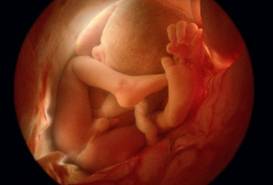
» » Baby :
Your baby is now fully formed and, if it is a boy, his testicles should have descended. His fingernails are surprisingly long and he may have scratched himself. The vernix has mostly disappeared. He will gain weight at the rate of about an ounce per day during the last month before the birth.
Birth!
A mother’s due date marks the end of her 40th week. A pregnancy begins withphototake_newborn_at_birth implantation and the delivery date can be calculated using the first day of the last period. Based on this, pregnancy can last between 38 and 42 weeks with a full-term delivery occurring around 40 weeks. Some post-term pregnancies — those lasting more than 42 weeks are not truly post-term. A common “cause” is an incorrect due date. For safety reasons, most babies are delivered by 42 weeks, inducing labor if necessary.
